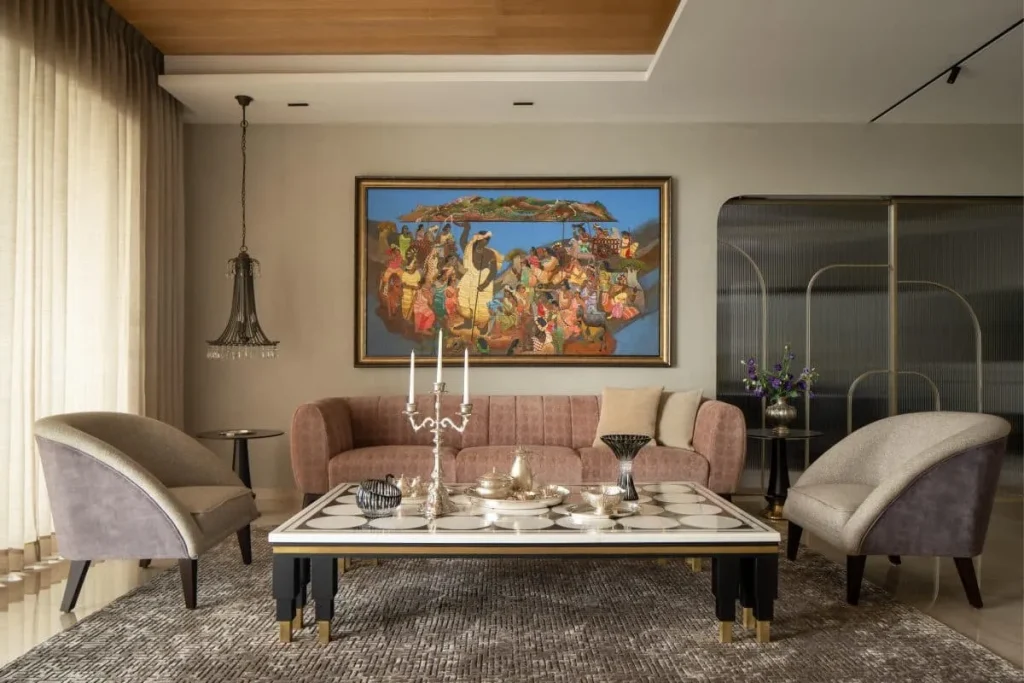Exploring Cultural Continuity and Contemporary Craft through the Lens of Architect Magazine and Interior Design Magazines
Indian interior design has long been a vibrant tapestry of culture, craftsmanship, and storytelling. Over the decades, this aesthetic has transformed, retaining its rooted identity while embracing global sensibilities.
A key force in documenting and propelling this evolution has been the media, particularly Interior Design Magazines and architecture magazines. Publications such as Architect Magazine South Asia, Inside Outside, Elle Decor India, and IFJ (Indian Furniture Journal) have been instrumental in showcasing India’s design journey, celebrating both the heritage elements and the modern interpretations that shape today’s spaces.
Interior Design Magazine: Overview of India’s Aesthetic Evolution
This blog delves into how Indian aesthetics in interior design have evolved and how interior design magazines have chronicled this shift, influenced it, and even challenged norms, establishing a dynamic bridge between tradition and innovation.
From Tradition to Transformation: The Roots of Indian Aesthetics
India’s aesthetic lineage in design traces back to centuries-old traditions. Vastu Shastra, Mughal artistry, Rajput grandeur, South Indian temple architecture, tribal motifs, and colonial influences have shaped how spaces were designed and experienced. Interior spaces were once deeply spiritual, symbolic, and functionally responsive to climate and lifestyle.
Traditional Indian homes displayed:
- Natural materials like stone, teak, and terracotta
- Intricate craftsmanship in carvings, jali (latticed screens), and inlay work
- Color symbolism, with palettes drawn from religious and regional beliefs
- Courtyards and verandas as social and climatic design solutions
- Cultural zoning within homes for rituals, guests, and extended family
In the early 20th century, as India moved through independence and modernization, design sensibilities began to shift. The emergence of modern architecture—pioneered by architects like Le Corbusier in Chandigarh and Charles Correa across India—planted the seeds for a new Indian aesthetic. It was in this evolving landscape that interior design magazines began documenting the transition.
The Role of Interior Design Magazine in Cultural Preservation
Publications such as Architect Magazine and Interior Design Magazine played an essential role in not just documenting but also preserving India’s rich cultural design ethos. Through editorial spreads, case studies, interviews, and features, these magazines highlighted how Indian designers reinterpreted heritage elements for contemporary contexts.
In the 1980s and 1990s, magazines showcased:
- Colonial bungalows renovated with modern amenities
- Traditional crafts like Madhubani and Pattachitra are incorporated into urban homes
- Handmade textiles and regional materials promoted as design statements
- Artisan collaborations, giving visibility to fading indigenous skills
Interior design publications provided platforms for these stories, bridging rural artisans with urban audiences. They contributed to the rise of modern India—a design movement that celebrated minimalism without losing cultural soul.
Global Influence Meets Local Identity
The 21st century ushered in globalization, digital connectivity, and increased exposure to international trends. Young Indian homeowners and designers began experimenting with Scandinavian, industrial, Japandi, and mid-century modern styles.
However, rather than replacing Indian aesthetics, global design influences led to a fusion:
- Jaipur-style arches paired with modern terrazzo flooring
- Bohemian interiors that blend Rajasthani block prints with contemporary furniture
- Kitchens designed in sleek European finishes but anchored by a traditional pooja corner
- Tropical Goan bungalows revamped with Portuguese minimalism and sustainable features
Interior design magazines captured this evolution by curating editorials around themes like “New Indian Modernism,” “Cultural Mash-Ups,” and “Sustainable Traditions.” Features showcased how design firms were using age-old techniques—lime plastering, mud walls, jaali screens—in new formats, adding layers of texture and cultural resonance to modern homes.
Publications like Architect Magazine South Asia led the way in showing how Indian aesthetics were not static but rather adaptable, interpretive, and experimental.
The Rise of Regional Narratives
One of the most significant changes in recent years has been the spotlight on regional design languages. No longer are interior design magazines only focused on metros like Delhi and Mumbai. Towns like Kochi, Ahmedabad, Jaipur, and Shillong are emerging in feature spreads with rich regional narratives.
These stories celebrate:
- The vernacular wisdom of Kerala homes with sloping roofs and laterite walls
- The earthy elegance of Kutch interiors using mud mirror work (Lippan Kaam)
- The Zen-meets-desert design from Rajasthan’s boutique hotels
- The modern tribal fusion of North-East India with bamboo, cane, and local motifs
Interior design magazines are increasingly championing these narratives, not only through professional projects but also by covering indigenous homes, student innovations, and the DIY revival of regional crafts. By doing so, these publications actively help in democratizing design inspiration beyond urban elite boundaries.
Materiality, Sustainability, and Sensory Design
With environmental awareness growing, Indian aesthetics are now deeply aligned with sustainable philosophies. Interior designers are looking back to local, natural materials—mud, lime, jute, bamboo, and stone—not just for their beauty but also for their carbon footprint.
Architect Magazine and other platforms have highlighted such shifts through:
- Editorial features on zero-waste studios and earth architecture
- Interviews with designers reviving vernacular cooling systems
- Spotlights on handmade and upcycled interiors as the future of luxury
These conscious design movements are rooted in age-old Indian values, where nothing was wasted and everything was made with care. Interior design magazines have helped translate these timeless practices for the modern reader, offering both inspiration and education.
Aesthetic Storytelling in the Digital Age
While print still holds prestige, digital platforms have transformed how design stories are told and consumed. Interior design magazines have adapted with:
- Virtual walkthroughs and AR-enhanced layouts
- Instagram reels and design shorts to highlight craft
- Online competitions and crowd-sourced design calls
- Collaborations with content creators, stylists, and artisans
But even in the digital shift, the storytelling ethos remains. Whether it’s a feature on a luxury apartment in Gurgaon with Madhubani murals or a studio apartment in Bandra using recycled wood, the essence lies in the narrative—the dialogue between past and present, heritage and vision.
The Future of Indian Aesthetics: Curated, Cultural, Contemporary
What lies ahead for Indian aesthetics in interior design?
Magazines like Architect Magazine and Interior Design Magazine hint at a future that is:
- Hyper-local and hyper-personal: Customizing spaces that reflect individual stories and regional roots
- Craft-centric and tech-enabled: Where AI coexists with hand-chiseled details
- Minimal yet meaningful: Reducing excess but retaining emotional design value
- Globally aware, deeply rooted: Celebrating India’s unique design fingerprint on a world stage
As younger designers enter the field and consumers seek more than just Pinterest-ready homes, the role of media becomes even more crucial. Interior design magazines are no longer just style guides—they’re cultural curators, memory keepers, and trend forecasters.
Interior Design Magazine: Where Indian Aesthetics Endure and Evolve
The evolution of Indian aesthetics is a story of resilience, reinterpretation, and revival. Interior design magazines have served as both mirrors and makers of this journey, documenting heritage, enabling discovery, and shaping discourse. Through the glossy pages of Architect Magazine or the vibrant digital grids of Interior Design Magazines, one can witness the soul of India—constantly adapting but never forgetting where it comes from.
As design becomes more democratized and narrative-driven, Indian aesthetics will continue to thrive, not as a trend but as a timeless expression of identity. And in this journey, design publications will remain the storytellers of spaces that breathe culture, craft, and character.






